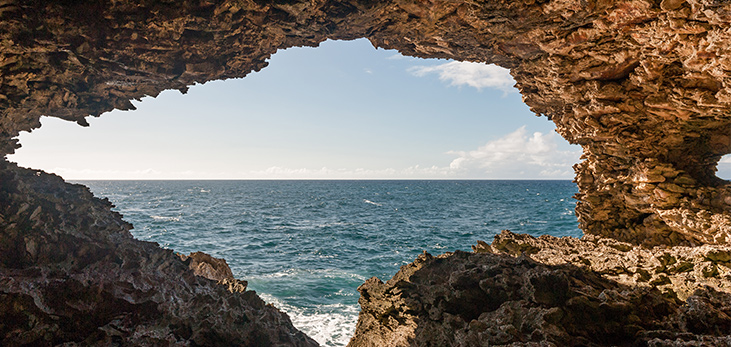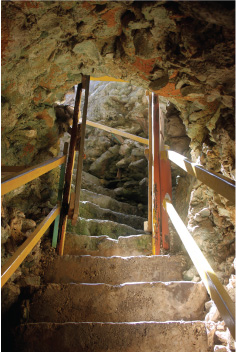|
The Animal Flower CaveWelcome to the island's only accessible sea-cave. Discovered in 1780 by two English explorers, the Animal Flower Cave has since then grown to be one of the many attractions found in Barbados. A group of guides take visitors into the cave for a minimal fee. Located at the northern tip of Barbados in the rugged parish of St. Lucy, the Animal Flower Cave is known for its famous sea anemones found in the pools of the cave, hence the name Animal Flower Cave. These flowers intrigue visitors to the cave as they often disappear into their stalks when feeling threatened in their own environment.
The cave offers openings to the sea that aid in some of the most spectacular views to the ocean and on calm days visitors can easily take a swim into the natural pool. It is estimated that the coral floor of the cave is some 400,000 to 500,000 years old with the younger coral section above the floor approximating about 126,000 years old. A German Geographical Institute was responsible for undertaking the task of this dating and evidence of such can be seen in the A-framed bar and restaurant on the premises of the cave. This restaurant was originally opened in 1961 as a cottage but in 1970 was converted to a business. Though this amazing cave was formed at sea level, it now stands approximately six feet above the high tide mark due to the fact that Barbados is rising about 1 inch per 1,000 years. This in itself, gives a clear indication of the cave's age.
|




 The entrance to this cave is made possible by huge coral stone steps that lead down to the base of the cliffs. Built in 1912, the historic steps act as a surviving trace of dancehall days gone by when the people of Barbados would visit by way of horse and buggy on weekends to get way from it all and enjoy the relaxing ambience of the seaside.
The entrance to this cave is made possible by huge coral stone steps that lead down to the base of the cliffs. Built in 1912, the historic steps act as a surviving trace of dancehall days gone by when the people of Barbados would visit by way of horse and buggy on weekends to get way from it all and enjoy the relaxing ambience of the seaside.